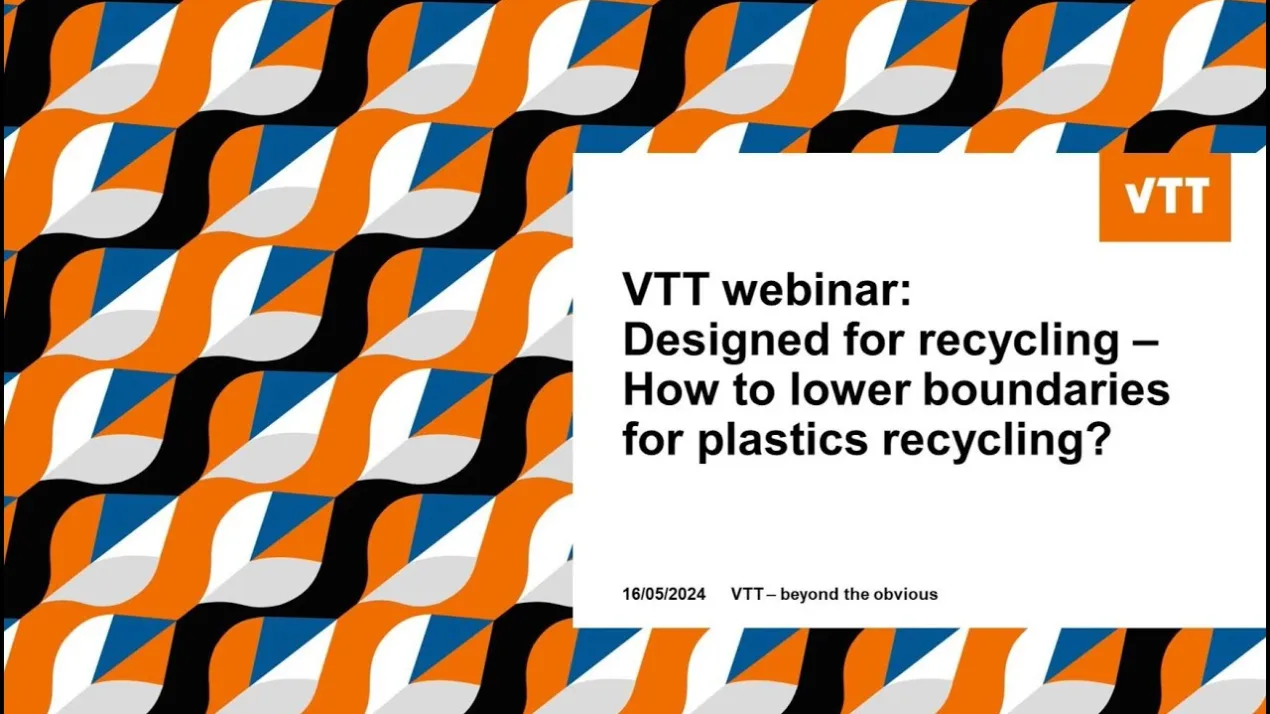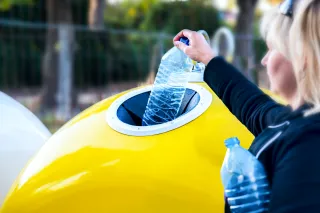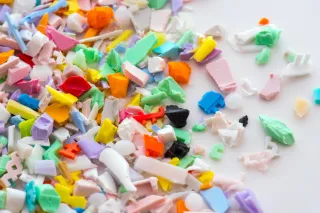Thank you for your interest towards Designed for recycling – How to lower boundaries for plastics recycling?
You can watch the webinar "Designed for recycling – How to lower boundaries for plastics recycling?" on this page. The webinar covers the latest insight from the plastic industry and what opportunities VTT can offer. Additional materials:
Get in touch with our expert

Q&A session
Q: Do you separate and classify different kinds of plastics before recycling process? For instance, by optical means?
A: Different plastic gradess are typically identified and sorted using NIR (near infrared) sensors before recycling.
Q: Which additives? Do additives contaminate R-plastic for following recycling? Do these machines apply to packagng plastics only or also from other streams?
A: Additives can be for example virgin plastic, antioxidant, processing aids, impact modifiers, fillers etc. The same additives are used with the virgin plastics as well, so they do not contaminate recycled plastic. The machines can be used for most plastic streams, not only packaging plastics.
Q: What actions are in place to improve the washing stage in plastics recycling? To my understanding DfR can't guarantee impurities not entering the recycling system, and therefore improved washing could be a key technology to improve end quality.
A: There are options to use caustic wash and detergent to improve the washing. There is a huge effect also in for example the friction during the washing process, so washing equipment development is important as well. In addition to washing there are several 'super cleaning' methods to get rid of volatiles from recycled plastic, like using longer term vacuum and elevated temperature for the pellets.
Q: How do you see the interplay between DfR guidelines and the dificulty of defining the \target technology capabilities\": E.g., is a hot wash considered that can remove printing? Or is any printing considered non-recyclable? There are more examples, but designing for recycling always needs to be informed about the pathway and capabilities, which are currently quickly developing."
A: The problem with printing inks is that often the recycled plastic is preferred to be transparent and the inks ending in the recycled plastic makes it cloudy or colored. There are printing inks that can be removed usually with caustic wash in the recycling process but the inks are also causing problems in recycling process as not all used inks can removed by washing. But certainly design for recycling goes hand in hand with the material and recycling development.
Q: Just a curiosity. Given that a portion of the plastic waste comes from medical waste. Is it possible to recycle these waste with the same process of recycling packaging plastic waste? or do you think there should be huge improvement in the design phase?
A: The plastic waste from medical field is certainly an interesting waste stream and could be a source of high quality waste plastic. The problem with medical waste is the contamination and sorting. Biohazardous or drugs/chemicals containing waste plastics are better to be disposed by burning for energy so the medical plastic waste would need to be separated to hazardous and non-hazardous plastics in the hospitals to recycle part of it. And that requires support from hospital management for storage space and logistics. There has been some pilots for sorting hospital plastic waste in Finnish hospitals but the volumes have not been remarkable.



